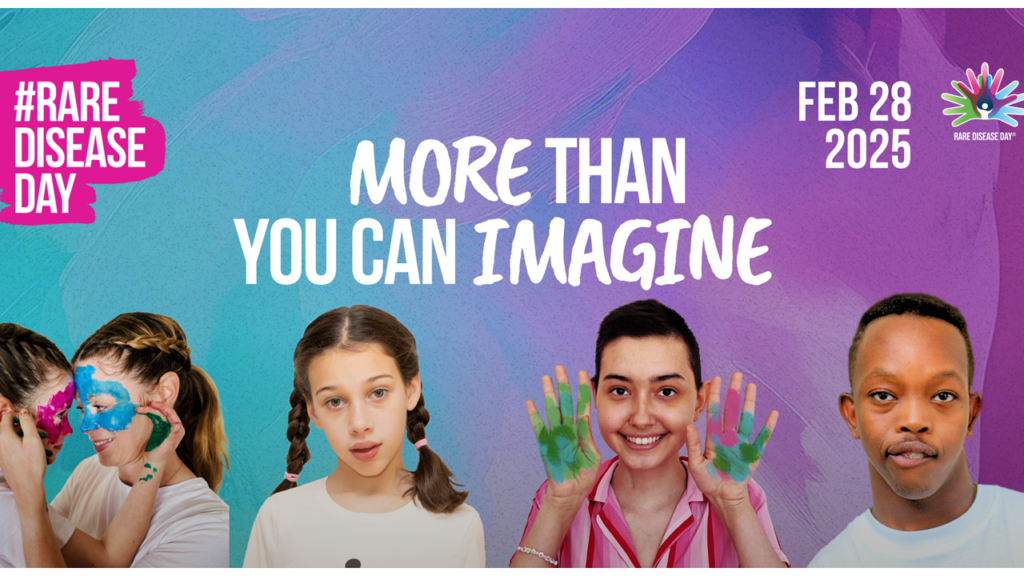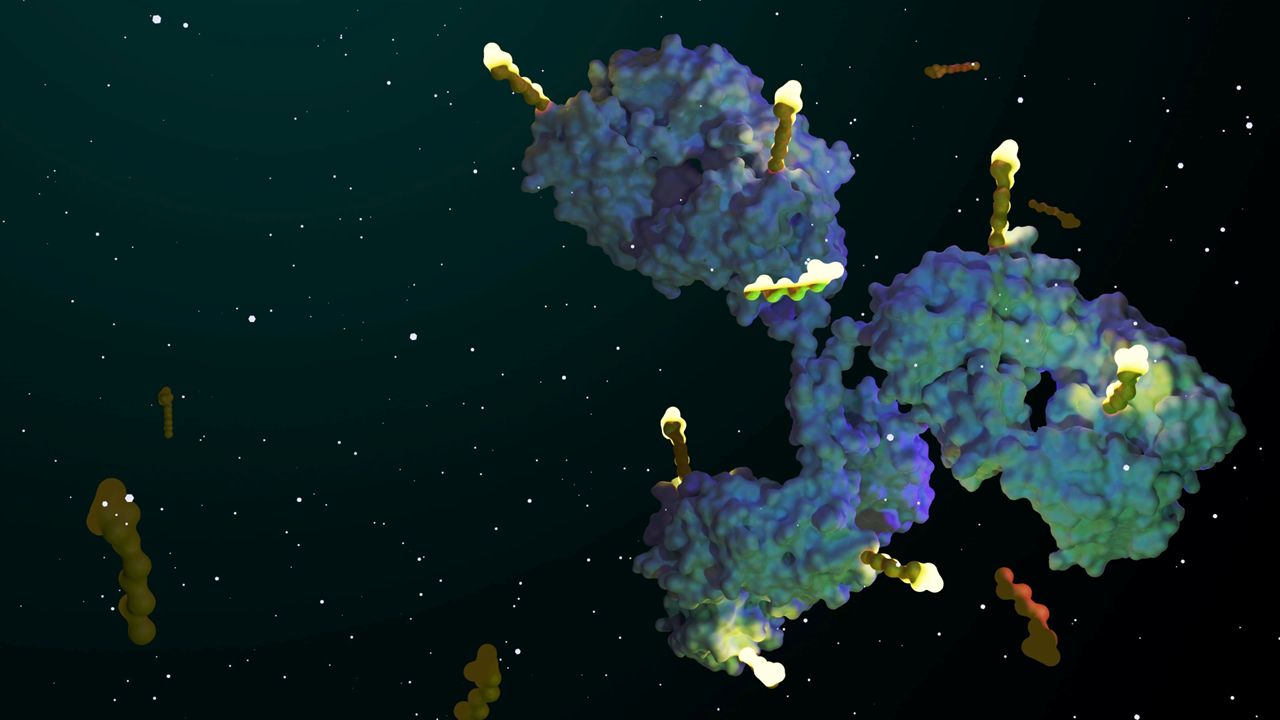Every year on February 28, 2025, the global community pauses to celebrate Rare Disease Day — a day dedicated to shining a light on the challenges and triumphs of those affected by rare diseases. Rare Disease Day 2025’s theme, “More Than You Can Imagine,” challenges us to look beyond statistics and recognize the profound, multifaceted impact these conditions have on individuals and communities.
Initiated in 2008 by the European Organisation for Rare Diseases (EURORDIS), Rare Disease Day has grown to span more than 100 countries. In the US, the National Organization for Rare Disorders (NORD) leads the movement, supporting advocacy, research and patient resources. Their efforts have increased awareness and helped drive critical policy changes.
A Brief History on Rare Disease Day 2025
Rare diseases are defined by their low prevalence — a condition affecting fewer than 200,000 people in the US. Yet, with over 10,000 rare diseases, their collective impact is enormous, affecting approximately 25 to 30 million people in the US alone.
While conditions like cystic fibrosis and Huntington’s disease have gained public attention through robust advocacy, many, such as Ehlers-Danlos syndrome and idiopathic pulmonary fibrosis, remain under the radar.
The rare disease landscape spans all age groups. Nearly half of rare diseases affect children, underscoring the importance of early diagnosis and pediatric care. At the same time, many conditions are primarily diagnosed in adults, creating lifelong challenges that require ongoing management.
A new NORD report on newborn screening programs highlighted how early detection enables timely interventions, dramatically improving outcomes for infants.
Embracing “More Than You Can Imagine” means understanding that each rare disease tells a unique story— one that goes beyond clinical symptoms to touch on social, emotional and economic dimensions.
XTALKS WEBINAR: Pioneering Progress for Rare Lives: Cell and Gene Therapy Trials in Pediatric Rare Disease Populations
Live and On-Demand: Monday, February 24, 2025, at 10am EST (4pm CET/EU-Central)
Register for this free webinar to learn about improving outcomes through early treatment and addressing regulatory requirements for pediatric rare diseases.
Breakthroughs and Advances in Rare Disease Research
Recent advances in rare disease research are ushering in transformative therapies for longstanding unmet needs.
In hereditary angioedema (HAE), for example, donidalorsen — an investigational RNA-targeted prophylactic treatment — has demonstrated impressive efficacy. Data from pivotal Phase III and supportive Phase II studies show sustained reductions in HAE attack rates and significant quality-of-life improvements. With an FDA decision expected by August 21, 2025, donidalorsen could offer a reliable, patient-friendly option for those affected by unpredictable, severe HAE attacks.
Related: KalVista Shares New Data on Sebetralstat for Hereditary Angioedema (HAE)
Another achievement is the FDA approval of Gomekli (mirdametinib) for neurofibromatosis type 1 (NF1). As the first approved therapy for both adults and children, mirdametinib has shown objective response rates (ORR) of 41% in adults and 52% in children in the Phase IIb ReNeu trial, along with deep, durable tumor volume reductions.
Ultragenyx’s UX111 represents another promising advance. This adeno-associated virus (AAV) gene therapy targets Sanfilippo syndrome type A (MPS IIIA), a devastating pediatric disorder characterized by progressive neurodegeneration and severe developmental regression. The FDA has accepted a Biologics License Application (BLA) and designated Priority Review to UX111, offering a potential option for affected families.
Additionally, Aro Biotherapeutics recently received FDA clearance for an Investigational New Drug (IND) application for ABX1100, a novel candidate for late-onset Pompe disease (LOPD). LOPD, a rare metabolic disorder due to acid alpha-glucosidase deficiency, leads to progressive muscle weakness and respiratory challenges.
Together, these breakthroughs mark a vibrant era in rare disease research, each representing a major milestone with the potential to improve patient outcomes and quality of life.
XTALKS WEBINAR: A Rare Look into New Guidances: The Future State of Orphan Drug Development
Live and On-Demand: Tuesday, February 25, 2025, at 11am EST (4pm GMT/UK)
Register for this free webinar to explore how the rare disease landscape is changing with guidance from AI, accelerated approval pathways and fostering DEI in clinical research.
Key Collaborations in Rare Disease Research
Recent innovative partnerships illustrate a cross-sector approach to rare disease research that leverages complementary strengths to accelerate drug development and build a patient-focused ecosystem.
The collaboration between Stand Up To Cancer and Johnson & Johnson aims to explore targeted therapies for a rare blood cancer-linked disease. This alliance merges patient advocacy with deep pharmaceutical expertise to address critical unmet needs.
Similarly, Cure Rare Disease recently secured a $5.69 million grant from the California Institute for Regenerative Medicine to advance gene therapy for spinocerebellar ataxia type 3 — a neurodegenerative disorder with few treatment options.
Further momentum comes from the partnership between Biogen and Stoke Therapeutics, which is developing and commercializing zorevunersen for Dravet syndrome, a rare genetic epilepsy characterized by refractory seizures.
In another initiative, ViralGen and the CTNNB1 Foundation have joined forces to manufacture a new gene therapy for CTNNB1 syndrome — a rare genetic disorder that disrupts key developmental processes.
These collaborations and many more are fueling progress in rare disease research.
XTALKS WEBINAR: Bridging Borders: Strategies for Successful Cross-Border Participation in Global Rare Disease Clinical Trials
Live and On-Demand: Friday, February 28, 2025, at 10:30am EST (4:30pm CET/EU-Central)
Register for this free webinar to learn about key cross-border enrollment and retention factors for conducting cross-border rare disease trials, covering regulatory intelligence, operational considerations and methods for enhancing patient experience.
Challenges in Rare Disease Research
While breakthroughs are emerging, rare disease research continues to face several challenges.
Limited funding is a constant obstacle, as small patient populations can make it difficult to secure the investments needed for pioneering studies. Complex regulatory pathways also slow the transition of promising therapies from the lab to clinical practice.
A study in BMC Health Services Research highlighted operational challenges — such as workforce training, infrastructural limitations and difficulties integrating new technologies — which may delay advanced treatments.
Beyond research, diagnosing a rare disease is often a long and exhausting process. Many conditions share symptoms with more common illnesses, leading to years of misdiagnoses and ineffective treatments. Patients frequently visit multiple specialists before receiving an accurate diagnosis, a journey that is both emotionally and financially draining.
Many people with rare diseases describe feeling lost in the healthcare system, struggling to find physicians who truly understand their condition.
Enhancing funding mechanisms, streamlining regulatory processes and investing in improved diagnostic and data-sharing infrastructures could ensure that scientific innovations translate into timely, effective patient care.
Rare Disease Day 2025 serves as a reminder that the broader challenges of accessibility, affordability and awareness still require urgent attention.
Show your support by participating in programs like NORD’s #ShowYourStripes campaign — wear striped clothing or accessories to symbolize the zebra, a mascot for rare diseases that represents the uniqueness of those living with them.












Join or login to leave a comment
JOIN LOGIN